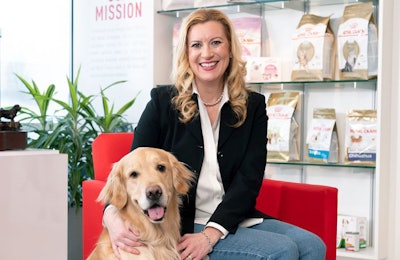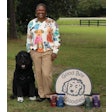
Women fill executive leadership roles in pet food companies large and small. Likewise, women have founded numerous pet food companies. Challenges they face bear similarities to those of women in many other fields. However, the pet food industry provides opportunities for women looking to enter the field or advance within it.
“When I started out in the pet food industry, I didn’t think of myself as a trailblazer,” Sissy Harrington McGill, founder of Solid Gold Pet said. She started the company in 1974.
“I saw something that needed to be done so I went out and did it,” she said. “We don’t look at food for our pets in the same way we look at food for humans, and I didn’t understand why not. So, I brought a holistic approach to pet food to help champion my pets’ health that I love so much. I would advise for those women starting out in the industry to do the same – advocate for our pets, the way we advocate for people.”
Speaking of advocating for people, some pet food companies have developed strategies for encouraging increased leadership by women. For example, Solid Gold held the Women That Inspire Us contest, which rewards the winner with a spa day. Royal Canin hosts an annual Women’s Veterinary Leadership Forum in October.
Women's situation in the pet food industry resembles most other fields, Kamie Eckert, president of Mars-owned Royal Canin’s United States division, said. However, another pet-related field shows a dramatic gender disparity.
Women predominate in veterinary medicine, making up an estimated 85% of vets, but they do not dominate the majority of leadership or academic roles, she said. Developing means to advance womens’ careers in the veterinary field sheds light on how to do so in other sectors of the pet industry.
“We're really trying to figure out how do we bridge some of those gaps,” she said. “A lot of it has to do with how you grow up in your career and what you learn along the way, and the experiences you take.”
A veterinarian who has worked in a clinic for most of her career needs to find ways to build experiences beyond the stethoscope, for example. In general, collecting a range of experiences boosts any woman’s career.
“That's one of the things that I as a woman have had to do throughout my career, and it continues,” Eckert said. “How do you find experiences that challenge you give you different context and perspective? There are challenges as a woman, you've got a lot of demands, but I think it's also about how you own your development and how you set your eyes on a goal that you really want to achieve.”
Diverse career paths for women in pet food industry
Achieving those goals may follow a different route than male peers, but arrive at the same destination. For example, if a woman chooses to be a mother, her career may have a gap or be otherwise affected. Eckert encourages women not to be discouraged by this.
“There’s no limit that if I haven't done this by 40, I can't do it,” she said. “I'm an example of that. Start really thinking about what you want to do with that career and where you can lead. That is actually what will shift the dynamics of the populations, as more women realize, just because you have this gap during those years, during your 30s, it doesn't mean you don't accelerate as you head into your 40s.”
While opportunities have opened for women in the pet food industry. That wasn’t always the case.
“The FDA said to me, there's no women in the pet food industry,” Harrington said. “This was in 1974. And I said to them, ‘well there is now.’ I was among very few female CEOs in the ‘70s, but that didn’t slow down my vision. Some people wouldn't even see me when they found that I was a woman, they wouldn't even answer my letters. They’d say, ‘When your husband writes to me or calls me I'll talk to him.’ Meanwhile, I was expanding my brand to include specific kinds of food for dogs of different ages, stages, and sizes. I was on a mission to provide my pets the best nutrition through natural foods focused on delivering digestive health.
“If anything, being a woman in the industry only made me more determined. The more no’s I received, and there were plenty, the harder I worked.”
While sexism and the glass ceiling persist, current conditions have improved for women in the pet food industry. Ultimately, reducing gender prejudices opens up companies to greater innovation.
“There shouldn't be any difference,” Harrington said. “It's who has the best ideas. That's the most important thing, not whether they're male or female. What's the difference? We both have brains. We need people, regardless of gender, to educate pet owners on how the ingredients they give their pet affects their health. Great health starts with the gut - if you’re not healthy in the stomach, you’re not going to be healthy. We need the industry to help lead the way in viewing our pets as equals to us, especially in terms of food quality. We're improving all the time. As we gain more knowledge, we improve the food. And that's the way it should be.”

















